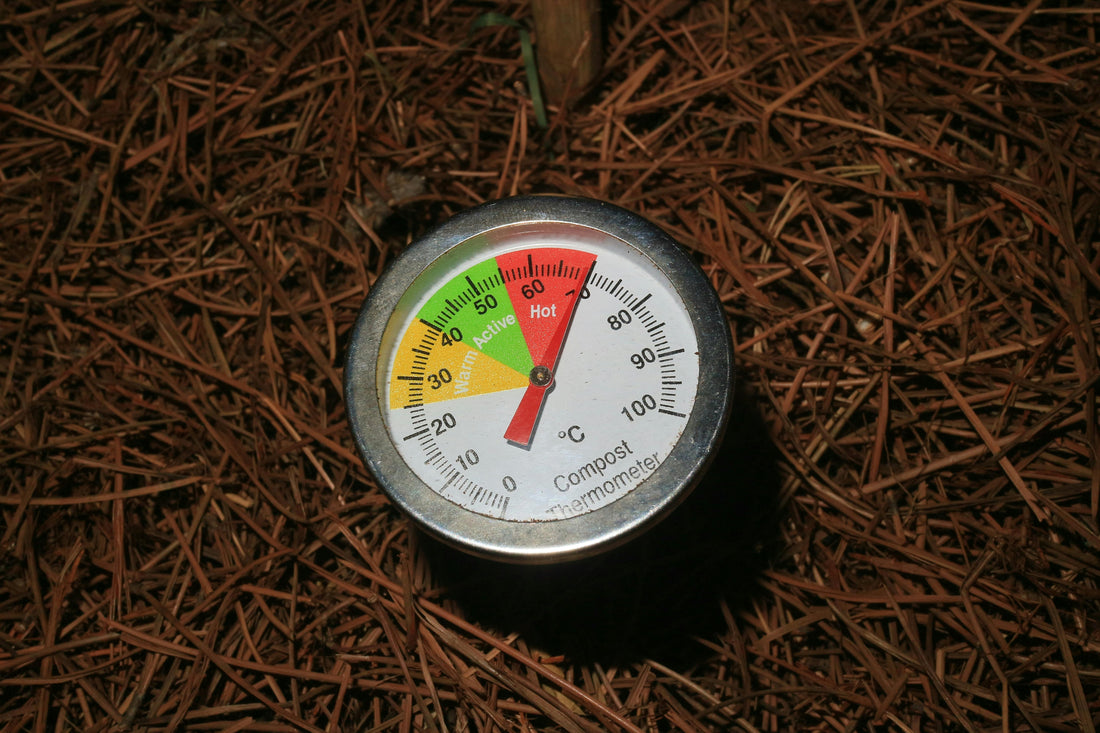
Mastering the Garden Timing Game
Share
Mean Temperature: The Superpower Every Gardener Needs (Seriously)
Alright, gardeners, let’s talk about something that sounds way more complicated than it really is: mean temperature. I know, I know—it sounds like something you’d need a PhD in meteorology to understand, but trust me, it’s actually pretty simple and way more helpful than you might think. Plus, it’s your new secret weapon for planting success!
Let’s break it down, shall we?
🌡️ What is Mean Temperature? (Spoiler: It’s Not a Math Monster)
The mean temperature is basically the average temperature over a set period. Think of it as your garden’s mood ring—telling you what the weather is usually like, so you can figure out when it's a good time to plant. It’s the calm, cool, collected version of that chaotic weather app you check 10 times a day.
Here’s how you calculate it (don’t worry, no calculator required!):
-
Take the temperature for each day over a period of time (let’s say a week).
-
Add them all up (don't stress, we’re just doing simple math here!).
-
Divide the sum by the number of days you measured, and voila! You’ve got your mean temperature. It’s like averaging your garden’s temperatures to make a prediction about what to plant.
For example, let’s say the temps for 7 days are:
-
5°C, 7°C, 9°C, 8°C, 6°C, 4°C, and 10°C
Add those up (5 + 7 + 9 + 8 + 6 + 4 + 10 = 49), divide by 7, and the mean temperature is 7°C. Simple, right?
🌡️ Why Should You Care About the Mean Temperature? (It’s Actually Pretty Fun)
Okay, so we’ve learned that the mean temperature is like a little temperature average, but why does it matter? Here’s why:
-
Predict Frosts Like a Pro: Imagine waking up on a chilly spring morning and realizing the frost didn’t sneak up on you. Why? Because you’ve been tracking your mean temperatures like a garden superhero! If your mean temperature is still close to freezing, it’s time to break out the old bed sheets for a little frost protection. You can plan ahead, rather than waiting for the surprise "Oh no, my tomatoes!" moment.
-
Planting Like a Planting Pro: Want to know exactly when to sow your peas and plant those tomato seedlings? The mean temperature has your back! Cool-weather crops (think peas, lettuce, and spinach) love temperatures between 5°C and 18°C. Warm-weather crops (like tomatoes and peppers) are picky and prefer 18°C to 30°C. So, if the mean temperature is still on the chilly side, hold off on those tomatoes until you’re sure it’s warm enough for them to throw a little party in the garden.
-
Maximize Your Growing Power: Using the mean temperature helps you avoid planting too early and too late. It's like having a garden guide that tells you exactly when it’s “go-time” for your crops. Not too soon (hello frost), not too late (your plants deserve to grow tall and strong)!
-
Farmers' Almanac: Your Gardening BFF: While the good ol’ May long weekend rule is popular in town, why not take it a step further? The Farmers' Almanac is like a magical garden crystal ball, giving you insights into long-term weather patterns. It tells you when to plant based on historical trends, and it’s got a bit of a mystic vibe to it. So, why not trust the Almanac over just the calendar? Maybe the Almanac’s been around for centuries for a reason! 😉
Mean Temperature: The Gift That Keeps on Giving
Here’s the thing—mean temperature isn’t just for math nerds or weather geeks. It’s for every gardener who wants to feel like they’ve got this whole planting thing figured out. It’s a little like knowing the secret handshake that helps you get ahead of the weather.
So, next time you’re looking at your weather app and wondering, “When’s the right time to plant?” just remember to check the mean temperature. And hey, if you’re still not sure, just channel your inner Farmers’ Almanac, trust your instincts, and get those seeds in the ground. You got this!
Happy planting! 🌱
